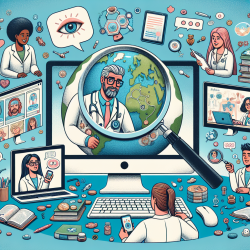Understanding Individual Differences in Down Syndrome: A Pathway to Improved Outcomes
Down syndrome (DS) is a common neurodevelopmental disorder, typically characterized by an extra copy of chromosome 21. However, recent research, such as the study by Karmiloff-Smith et al., highlights the importance of understanding individual differences within this population. This understanding is crucial for practitioners aiming to enhance therapeutic outcomes.
The Importance of Individual Differences
Historically, DS has been viewed through a homogeneous lens, often overlooking the wide range of individual variations at genetic, cellular, neural, cognitive, behavioral, and environmental levels. This oversight can lead to generalized treatment approaches that may not be effective for all individuals.
The research underscores that individual differences in DS are not just a matter of academic interest but have practical implications for therapy. For instance, variations in gene expression, even among those with full trisomy 21, suggest that a one-size-fits-all approach is inadequate.
Implications for Practitioners
For speech-language pathologists and other practitioners, recognizing these differences can inform more personalized intervention strategies. Here are some actionable insights:
- Genetic Variability: Consider genetic testing to understand specific gene expression profiles, which can inform targeted therapies.
- Cognitive Profiles: Use assessments that capture the wide variability in cognitive abilities, such as language and memory, to tailor interventions.
- Environmental Influences: Engage families in creating supportive home environments that address individual needs, enhancing therapeutic outcomes.
Encouraging Further Research
While current findings are promising, further research is essential to deepen our understanding of how these individual differences affect therapy outcomes. Practitioners are encouraged to collaborate with researchers to explore these areas:
- Longitudinal Studies: Conduct long-term studies to track the impact of personalized interventions on cognitive and language development.
- Technological Integration: Utilize online platforms, like TinyEYE, to gather data and refine intervention strategies based on individual progress.
By embracing the complexity of individual differences in DS, practitioners can significantly enhance the quality of life for children with DS and their families. This approach not only aligns with the latest research but also embodies a compassionate, personalized approach to therapy.
To read the original research paper, please follow this link: The importance of understanding individual differences in Down syndrome.










